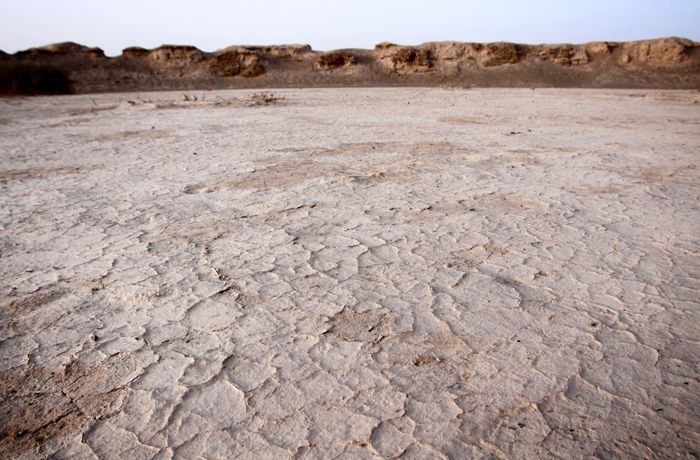It is estimated that nearly 40 cities have been abandoned as a result of desertification in Northwest China in the past 2000 years. The old city of Yinpan, which lies approximately 300km east of the modern city of Korla in China's western Xinjiang province, is one of those cities. Lying on the fringes of China's most formidable desert, the Taklamakan, its location is one of the harshest and most remote in all of China.
Approximately 2000 years ago, the city of Yinpan was a successful, thriving and eclectic city. Welcoming travelers from across Asia, plying the legendary Silk Road, the city was populated by a diverse mix of ethnic groups originating from the now-known Middle East, Mongolia and Western China. The city's exact beginnings are unclear, but what is known, is that nature and man inadvertently conspired to fuel the city's rapid demise some 1500 years ago.
The mysterious city was deemed 'lost' only up until 1898, when the British archaeologist-explorer Sir Marc Aurel Stein rediscovered its location. What he found was evidence of a prosperous city of merchants and traders living in a developed city containing infrastructural components such as city walls, a garrison, Buddhist temples and living quarters capable of housing thousands of people. Stein had proved the existence of this fabled place, but like those before him, could not shed light on the reasons for its abandonment.
Chinese archaeologists currently hypothesize that the demise of Yinpan, around 1500 years ago, was a result of two combinative factors. The first, was a change in the route of the Silk Road, taking it away from the city, hence reducing trade in and out of the area. The second factor was the drying up of the Peacock River, which traditionally supplied water to the region. This disappearance of water is thought to have been a result of natural environmental fluctuations and the inability of the people to adapt to this change, led to the misuse, and ultimately, the complete disappearance of water.
Today, the city is but a shadow of its former self. Hundreds of years of erosion have eaten away at the abandoned structures, leaving faint indications of what was once present. The city is being assaulted by the environment. In the spring, sand storms batter the remaining structures making them increasingly fragile. Then, in the summer months, occasional flash floods from mountains to the north, wash away the delicate topsoil.
Sadly, little is being done to protect what is left of the old city of Yinpan. The self-governing Xinjiang Uyghur Autonomous region is less affluent than other provinces in China and has little to spare for the city's protection. The site is protected in its geography from the hoards of domestic tourists in China, however it is the city's fragility against the environment that is proving to be its biggest weakness.
As desertification increases in the region and sandstorms escalate in intensity, the assault on Yinpan intensifies. The bones and belongings of former citizens of this city lie scattered around, however with little to protect them and the city, a link in China's rich history in the west of the country, is slowly being wiped off the few maps that it remains to be found upon.





